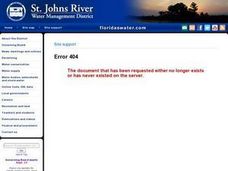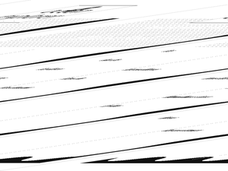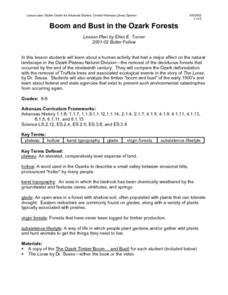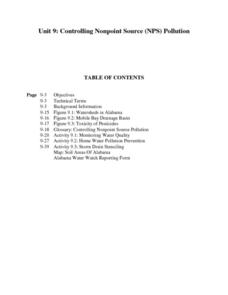Science 4 Inquiry
An Investigative Look at Florida's Sinkholes
In May of 1981, the Winter Park Sinkhole in Florida first appeared and is now referred to as Lake Rose. Scholars learn about the causes of sinkholes through an inquiry project. Then, they analyze recent data and draw conclusions to...
101 Questions
2010 Guatemalan Sinkhole
Dig deep into a lesson studying volume. Learners view images of a Guatemalan sinkhole that seems too big to be true! Their task is to determine the amount of material needed to fill the hole using information from news articles and videos.
Curated OER
Sinkholes in a Cup
Students create sinkholes and learn about the formation of sinkholes by using water, a foam cup, sugar, sand, and a sponge. In this sinkholes lesson plan, students also answer short answer questions.
Curated OER
More About Water Below the Ground
Students examine groundwater and its relationship to springs, artesian wells, ordinary wells, and sinkholes. They describe the process by which sinkholes are formed. They investigate saltwater contamination and its causes.
Curated OER
What is a Karst
Students investigate landforms by holding a class experiment. In this topography lesson, students define the word "karst" and discover why sinkholes are created on the surface of the Earth by completing worksheets. Students create a...
Curated OER
Sources of Potential Groundwater Contamination
Students construct models that demonstrate potential sources of contamination. Students select one type of contamination model (septic system, sinkhole, landfill, disposal lagoon, leaky barrels, oil spill, agricultural contamination) to...
Curated OER
Sinking in the Rain (or Drought)
Second graders, in groups, explore sinkholes and how they effect humans and the natural environment.
Curated OER
This Life Stinks
Students study cold seeps and see how organisms obtain energy from methane. In this sinkholes activity students examine the relevance of chemosynthesis to communities.
Curated OER
Strawberry Girl: Life on the Frontier
Students explore geographic changes by researching the state of Florida. In this Florida history lesson, students identify the storms and disasters that have created sinkholes in portions of Florida. Students read the book Strawberry...
Curated OER
Sugar Cube Karst
Students examine the way water passes through various substance and observe the development for pits and channels. In this geology lesson students define a karst is, how it is formed, and what pit and channels are.
Curated OER
Boom and Bust in the Ozark Forests
Here is a hard-hitting, cross-curricular lesson on the effects that the deforestation of the Ozark forests in the 19th century had on the people, animals, and ecosystems of the area. The Dr. Seuss book The Lorax is used as a way of...
Curated OER
Ancient Bugs
Young scholars describe Archaea. For this biology lesson, students examine biological communities and the role Archaea plays. Young scholars will compare and contrast the Archaea with bacteria and eukaryote.
Curated OER
I, Robot, Can Do That!
Students describe the three types of underwater robots and the advantages and disadvantages of using them. In this underwater lesson students are given a task and identify the best robot for the job.
Curated OER
Controlling Nonpoint Source Pollution
Learners examine factors affecting water quality. They test water in a local body of water to determine its quality. They collect data and continue monitoring the water monthly. They assess water quality in the home and on the farm.
Curated OER
What is a Karst?
Learners examine the process that creates limestone. In this limestone lesson students complete a worksheet and participate in a lab activity.
Curated OER
Life is Weird
Students study the organisms that are found in cold seeps and see how they interact with each-other. In this biological organism lesson students describe the major features of cold seeps and the process of chemosynthesis.
Curated OER
The Puzzle of the Ice Age Americans
Students describe alternative theories for how the first humans cane to America. For this human origin lesson students study the origins of the first Americans.
Curated OER
Chemosynthesis in the Classroom
Students observe the development of chemosynthesis in bacterial communities. In this bacteria lesson students explore that chemosynthesis is and how it is relevant to biological communities.
Curated OER
Journey Through Time
Students examine the movement of the Bison over the land bridge. In groups, they use the events to put them into the correct sequence. They apply measurement to chronological time and read more information about the land bridge.
Curated OER
Bison Calculations
Students discuss how animals are cared for when they are captured. Using calculations, they determine how much food and water it takes for one bison and compare their water intake to humans. They also compare their weight to that of a...
Curated OER
What is a Ruminant?
Students examine the way bison eat and digest their food. Using a diagram, they follow the food from one compartment to the next. They discover that bison are ruminants and discuss why the bison need four stomachs.
Curated OER
Analyzing a Picture
Students examine various photographs and identify three conclusions from them. Using the pictures, they write their own story based on their observations. They share their stories with the class and discuss how some of their...
Curated OER
Bermuda: Search for Deep Water Caves 2009: Out of Darkness
Students analyze the three models on the origin of troglobitic fauna. For this life science lesson, students also consider how the Zonation model explains the fauna's origin. They also use the Internet to research solutional and volcanic...
























